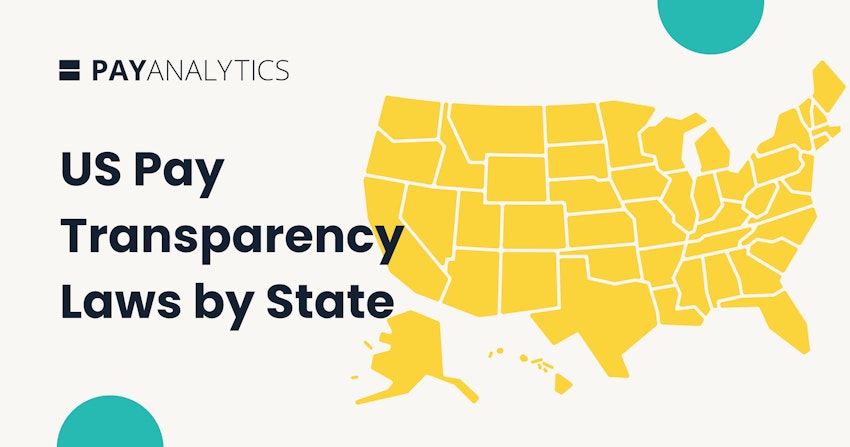Connecticut’s pay transparency law, officially known as HB 6380, or Public Act 21-30 (An Act Concerning the Disclosure of Salary Range for a Vacant Position), was introduced on June 7, 2021. The law was enacted with the aim of promoting transparency and equity in the workplace by requiring employers to disclose the salary range for a vacant position. The law came into effect on October 1, 2021, and has several provisions to ensure that pay transparency is enforced in Connecticut.
What employers does the law apply to?
The law applies to all organizations within the state of Connecticut that have one or more employees.
As clarified by the guidance on Public Act 21-30 released by Connecticut’s Department of Labor, the law also applies to employers within the state using the services of one or more employees for pay. This is the case even if those employees are located outside the physical confines of the state. Remote employees working outside Connecticut are therefore covered if they are working for or reporting to an in-state employer.
The law does not apply to any out-of-state “national” employer that is not located within the State of Connecticut.
Key requirements
There are four main components to Connecticut’s pay transparency law: equal pay for comparable work, wage range transparency, salary history ban, and freedom to discuss wages with others without fear of retaliation.
We discuss the key requirements below.
1. Equal pay for comparable work
Connecticut’s new legislation goes beyond the state’s existing prohibition of gender-based pay discrimination. It mandates equal pay for "comparable work" rather than just "equal work." This means that employees performing similar duties under similar working conditions, requiring comparable levels of skill, effort, and responsibility, must receive equal compensation.
Employers will be required to justify any pay discrepancies between employees of different genders by demonstrating that the difference is based on:
- A seniority system;
- A merit system;
- A system which measures earnings by quantity or quality of production; or
- A differential system based upon a bona fide factor other than sex, such as education, training, credentials, skill, geographic location, or experience.
2. Wage range transparency
Employers of Connecticut employees must disclose to applicants and employees the salary ranges for positions. Specifically, employers must:
- Provide an applicant the wage range for the position for which the applicant is applying upon the earliest of:
- The applicant’s request; or
- Prior to or at the time the applicant is made an offer of compensation.
- Provide an employee the wage range for the employee’s position upon:
- The hiring of the employee;
- A change in the employee’s position with the employer; or
- The employee’s first request for a wage range.
“Wage range” is defined as: “the range of wages an employer anticipates relying on when setting wages for a position.”
3. Salary history ban
- Employers are not allowed to seek the wage rate history of a prospective employee or to require disclosure of wage rate as a condition of employment.
- Employers are not allowed to rely on a prior wage rate to determine a wage rate.
- Employers are not allowed to discriminate or retaliate against a prospective employee for failing to disclose the employee’s wage rate history.
4. Freedom to discuss wages with others without fear of retaliation
Employers are not allowed to discharge, discipline, discriminate against, retaliate against, or penalize an employee for inquiring about, disclosing, or discussing:
- The employee’s wage rate; or
- The voluntarily disclosed wages of another employee.
What are the enforcement mechanisms in place and the penalties for non-compliance?
- An employee or prospective employee may bring a civil action for claimed violations of the Connecticut pay transparency law’s requirements within two years of a violation.
- A successful claimant may obtain compensatory damages, punitive damages and attorneys’ fees and costs.
Are there any proposed amendments to the law?
Connecticut recently proposed new legislation to expand upon its existing law and strengthen its commitment to salary transparency efforts. The proposed H.B. No. 5243 would bring Connecticut in line with other states such as California, Colorado, New York, and Washington by requiring employers to disclose salary ranges in all job postings.
How can PayAnalytics help Connecticut’s employers meet HB 6380’s requirements?
PayAnalytics is a leading provider of pay equity solutions for companies worldwide, supporting organizations at all stages of their pay equity journey. Whether an organization is just beginning to address pay equity or has been conducting pay equity audits for years, PayAnalytics provides tailored support to ensure compliance with relevant regulations and best practices. PayAnalytics’ global solution is adaptable to all primary regulatory environments, including Connecticut’s pay transparency law.
With PayAnalytics, Connecticut employers can easily:
- Get a comprehensive overview and in-depth understanding of their current salary structure.
- Create a framework to compare different jobs and employee characteristics based on standard and objective criteria.
- Conduct a pay equity analysis and measure and monitor pay gaps by any demographic variable.
- Address any identified pay disparities, correct pay discrepancies and close pay gaps by making the appropriate changes suggested by the software and understanding the associated costs.
- Gain valuable insights into pay practices and policies that may be contributing to pay disparities.
- Formalize and document pay policies, which will help them be better prepared to respond transparently to candidates’ or employees’ requests for compensation information.
- Prevent pay disparities and sustain fair pay with ongoing decision support.
- Proactively reduce the risk of non-compliance and minimize the cost of remediation by conducting pay equity assessments on a regular basis.
- Report and share pay equity information through a user-friendly, flexible reporting feature.
Please feel free to reach out to us at any time for additional information or a software demo. You can find more information about PayAnalytics here.
The information on this page is not intended to serve and does not serve as legal advice. All of the content, information, and material in this article are only for general informational use. Readers are advised that this information, legal or otherwise, may not be up-to-date.






